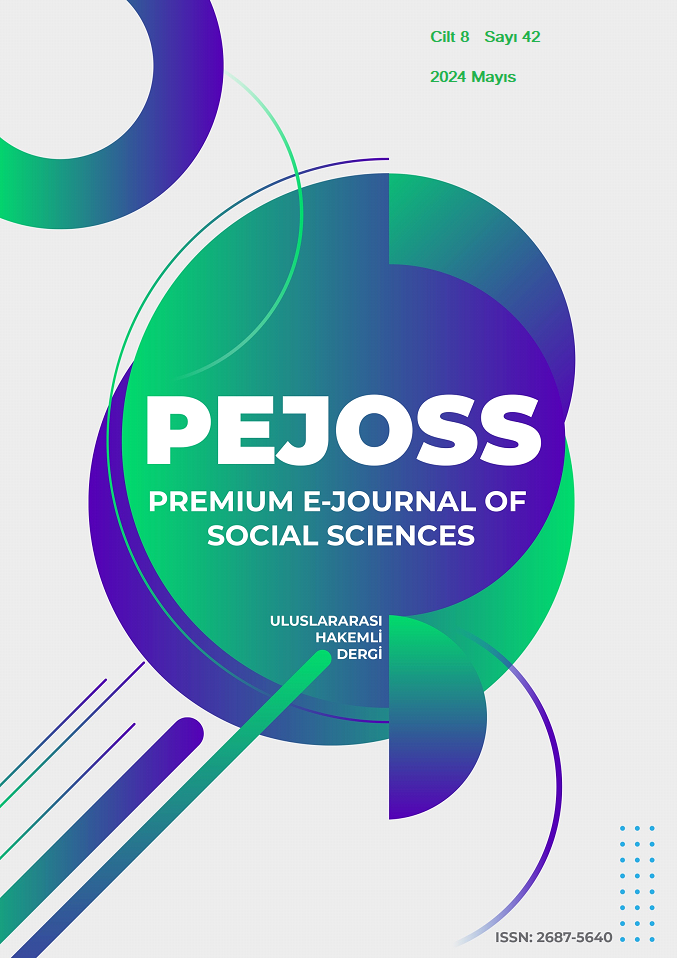Fire Safety of Lithium-Ion Batteries: Risk Assessment, Precautions, and Mitigation in Battery Electric Vehicles
DOI:
https://doi.org/10.5281/zenodo.11434251Keywords:
Electric Vehicle Fires, Lithium-Ion Battery, Battery Electric Vehicle, Thermal Runaway, FirefightingAbstract
Purpose: This study focuses on the fire safety of Battery Electric Vehicles, particularly examining the fire risks associated with Lithium-Ion batteries and the management of these risks.
Materials and Methods: The analysis is based on an in-depth review of current literature, particularly studies on thermal runaway scenarios in Lithium-Ion batteries and their tendencies to ignite while parked or during traffic accidents. Additionally, the relationship between the global usage and sales data of Battery Electric Vehicles and fire incidents has been evaluated.
Findings: Despite offering high energy density and efficiency, Battery Electric Vehicles carry a risk of fire and explosion, especially when Lithium-Ion batteries are physically damaged. Thermal runaway events in these batteries can result in serious fires, with increased risks during traffic accidents. General sales figures for electric vehicles and the incidence of fires in these vehicles are on the rise.
Conclusion: With the proliferation of Battery Electric Vehicles, an increase in fire incidents is expected. This situation requires the development of new strategies and methods for both vehicle manufacturers and emergency services such as fire departments. Enhancing the safety of onboard energy storage systems and increasing public awareness ofthis issue are recommended.
Downloads
References
Akgündoğdu, A., Karadeniz, O., Şahin, U., İn , S., Tiryaki, H., Erdoğan, G., . . . & Kocaarslan, İ. (2017). Elektrikli Araçlar için Batarya Paketi ve Batarya Yönetim Sisteminin Gerçeklenmesi. World Electro Mobility Conference (WELMO’17), 1, s. 56-62. İzmir.
Andersson, P., Wikman, J., Arvidson, M., Larsson, F., & Willstrand, O. (2017). Safe introduction of battery propulsion at sea. RISE Research Institutes of Sweden.
AUDI. (2022). e-tahrik ile geleceğe. AUDI: https://www.audi.com.tr/tr/web/tr/elektromobilite/elektrikli-araclar.html
Bisschop, R. (2020). Handling Lithium-Ion Batteries in Electric Vehicles: Preventing and Recovering from Hazardous Events. Fire Technology, 56, 2671-2694. doi:10.1007/s10694-020-01038-1
BMW. (2023). Elektrikli Otomobil Türleri. BMW: https://www.bmw.com.tr/tr/topics/fascination-bmw/bmw-i-ve-e-mobilite/elektrikli-otomobil-turleri.html#bev
Boehmer, H., Klassen, M., & Olenick, S. (2020, Temmuz 1). Modern Vehicle Hazards in Parking Garages Vehicle Carriers. Combustion Science & Engineering. https://www.nfpa.org/education-and-research/research/fire-protection-research-foundation/projects-and-reports/modern-vehicle-hazards-in-parking-garages-vehicle-carriers?l=401
Brzezinska, D., & Bryant, P. (2022). Performance-Based Analysis in Evaluation of Safety in Car Parks under Electric Vehicle Fire Conditions. Energies, 15, 649. doi:10.3390/en15020649
Crompton, T. (2000). Battery Reference Book.
Dia, H. (2023, Eylül 15). Electric vehicle fires are very rare. The risk for petrol and diesel vehicles is at least 20 times higher. The Conversation: https://theconversation.com/electric-vehicle-fires-are-very-rare-the-risk-for-petrol-and-diesel-vehicles-is-at-least-20-times-higher-213468
Ekici, Y. (2019). Batarya Yönetim Sistemleri. Malatya: Yüksek Lisans Tezi: İnönü Üniversitesi. http://abakus.inonu.edu.tr/xmlui/bitstream/handle/11616/42922/558222.pdf?sequence=1&isAllowed=y
European Commission. (2018, Mart). Workshop: Safer Li-Ion Batteries by Preventing Thermal Propagation? https://ec.europa.eu/newsroom/eusciencehubnews/items/614941
Evarts , E. (2015). Lithium batteries: To the limits of lithium. Nature, 526, 93-95. doi:10.1038/526S93a
Faraz, A., Ambikapathy, A., Thangavel, S., Logavani, K., & Prasad , G. (2020). Battery Electric Vehicles (BEVs). Electric Vehicles, 137-160. doi:10.1007/978-981-15-9251-5_8
He, X., Restuccia, F., Zhang, Y., Hu, Z., Huang, X., Fang, J., & Rein, G. (2020). Experimental Study of Self-heating Ignition of Lithium-Ion Batteries During Storage: Effect of the Number of Cells. Fire Technology, 56, 2649-2669. doi:10.1007/s10694-020-01011-y
Kazak, D. (2023, Kasım-Aralık). Su Sisi, CO2 ve HFC-227ea Söndürme Maddelerinin, Lityum İyon Batarya (LIB) Üzerinde Deneysel Çalışma. Yangın ve Güvenlik Dergisi, 243, 38-46. https://www.yanginguvenlik.com.tr/edergi/5/243/40/index.html
Kazak, D., & Öncel, H. (2024). İtfaiye Ekiplerinin, Tamamen Elektrikli Araç Yangınlarıyla Mücadelesinin İncelenmesi. Socıal Scıences Studıes Journal, 10(3), 384-394. doi:10.5281/zenodo.1090340
Kılınç, T. (2022, Eylül 29-30). Elektrikli Araç ve Şarj İstasyonlarında Yangın Güvenliği. Uluslararası Katılımlı Yangın Sempozyumu, 11-34. http://yanginsempozyumu.org/wp-content/uploads/2022/09/ 002.pdf
Kong, L., Li, C., Jiang, J., & Pecht, M. (2018). Li-Ion Battery Fire Hazards and Safety Strategies. Energies, 11(9), 2191. doi:10.3390/en11092191
Linja-aho, V. (2020). Hybrid and Electric Vehicle Fires in Finland 2015–2019. Presented in Fires in Vehicles (FIVE) -. Finlandiya. https://www.ri.se/sites/default/files/2020-12/linja-aho-paper-FIVE%20Hybrid%20and%20Electric%20Vehicle%20Fires%20in%20Finland%202015%E2%80%932019.pdf
Matulka, R. (2014, Eylül 15). The History of the Electric Car. Energy: https://www.energy.gov/ articles/history-electric-car
Nitta, N., Wu, F., Lee, J., & Yushin, G. (2015). Li-ion battery materials: present and future. Energy, 18(5), 252-264. doi:10.1016/j.mattod.2014.10.040
Outokumpu. (2024). Forta H-Series - Build stronger and lighter vehicle structures with stainless steel. www.outokumpu.com: https://www.outokumpu.com/expertise/2020/build-stronger-and-lighter-vehicle-structures-with-stainless-steel
Russoa, P., Barib, C., Mazzaroc, M., Rosac, A., & Morriellod , I. (2018). Effective Fire Extinguishing Systems for Lithium-ion Battery. CET, 67, 727-732. doi:10.3303/CET1867122
Schiemann, M., Fischer, P., Bergthorson, J., & Scherer, V. (2016). A review on lithium combustion. Applied Energy, 162(6), 948-965. doi:10.1016/j.apenergy.2015.10.172
Seber, H. (2023, Kasım-Aralık). İtfaiyecilerin Elektrikli Araç Yangını Operasyonlarını Planlanması. Yangın ve Güvenlik Dergisi, 243, 16-17.
Sun, P., Bisschop, R., Niu, H., & Huang, X. (2020). A Review of Battery Fires in Electric Vehicles. Fire Technology, 56, 1361-1410. doi:10.1007/s10694-020-00958-2
T.C. Sanayi ve Teknoloji Bakanlığı. (2022). Mobilite Araç ve Teknolojileri. Ankara. https://www.sanayi.gov.tr/assets/pdf/plan-program/MobiliteAracveTeknolojileriYolHaritasi.pdf
Tesla. (2021). Emergency Response Guide. (Model S Emergency Response Guide) https://www.tesla.com/ sites/default/files/downloads/2021_Model_S_Emergency_Response_Guide_en.pdf
Tohir, M., & Martin-Gomez, C. (2023). Electric vehicle fire risk assessment framework using Fault Tree Analysis. Open Res Europe, 1-20. doi:10.12688/openreseurope.16538.1
Yong, J., Ramachandaramurthy, V., Tan, K., & Nadarajah, M. (2015). A review on the state-of-the-art technologies of electric vehicle, its impacts and prospects. Renewable and Sustainable Energy Reviews, 49, 365-385. doi:10.1016/j.rser.2015.04.130
Zhang, L., Jin, K., Sun, J., & Wang, Q. (2022). A Review of Fire-Extinguishing Agents and Fire Suppression Strategies for Lithium-Ion Batteries Fire. Fire Technology. doi:10.1007/s10694-022-01278-3
Zhao, J., Xue, F., Fu, Y., Cheng, Y., Yang, H., & Lu, S. (2021). A comparative study on the thermal runaway inhibition of 18650 lithium-ion batteries by different fire extinguishing agents. iScience 24, 10.1016/j.isci.2021.102854.
Downloads
Published
How to Cite
Issue
Section
License
Copyright (c) 2024 Premium e-Journal of Social Science (PEJOSS)

This work is licensed under a Creative Commons Attribution 4.0 International License.


